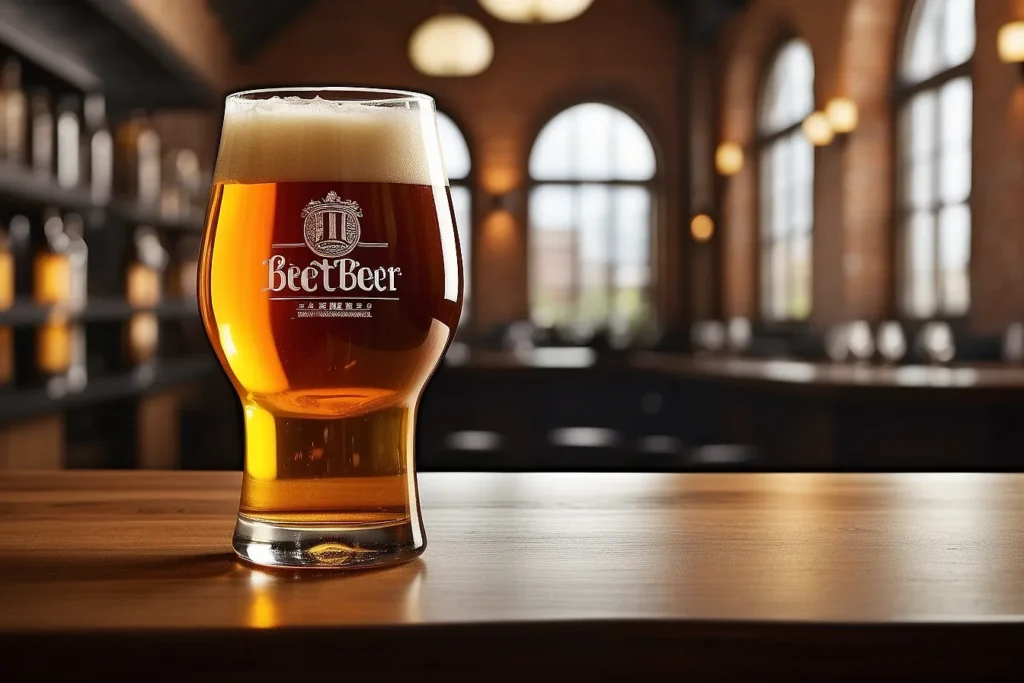Introduction
Welcome to our comprehensive guide on how to taste craft beer like a true professional. Whether you’re a novice or a seasoned beer enthusiast, understanding the nuances of craft beer tasting can elevate your drinking experience to a whole new level. In this guide, we’ll walk you through the step-by-step process of appreciating the flavors, aromas, and characteristics of craft beer. By the end, you’ll be equipped with the knowledge and skills to savor every sip like a connoisseur.
A Journey Through Craft Beer Tasting
Step 1: Consider the Beer’s Aroma

Before you take your first sip, take a moment to appreciate the beer’s aroma. Contrary to common belief, beer is not just for sipping; it’s also for smelling. Craft beer is brimming with unique aromatic hints that can provide valuable insights into its flavor profile.
By gently sniffing the beer, you can uncover subtle details that distinguish one beer from another. Your sense of smell and taste are intricately connected, so this initial step can enhance your overall beer-tasting experience.
Bear in mind that identifying all the aromas in craft beer can be challenging, especially for beginners. Some scents are delicate and may require a moment of contemplation to fully grasp. With practice, you can train your nose to detect these nuances. Start by identifying overarching aromas, such as citrus notes or herbal hints. Gradually, you’ll become adept at recognizing specific scents like pine needles or floral undertones.
Step 2: Tasting the Beer

After you’ve explored the beer’s aroma, it’s time to savor its taste. Hold the craft beer glassware for a few moments to allow the aromas to mingle with your senses. Tasting beer is an art, and there’s a right way to do it. Avoid the temptation to gulp it down; instead, savor each sip.
Begin by noting your first impression of the beer. Is it tart, sweet, bright, or earthy? These initial impressions offer valuable clues about the beer’s character, but they’re just the tip of the iceberg.
Take a second sip, and this time, focus on the flavors of the malts and hops. These deeper flavors require more contemplation to fully understand.
Finally, pay attention to the finish, which is the beer’s aftertaste. Does the taste linger, or does it fade away quickly?
Step 3: More Tips for Tasting Craft Beer
To ensure an optimal tasting experience, consider the following tips:

- Ensure the beer is in its best condition. Freshness and the right temperature are crucial for accurate judgments.
- Experiment with different serving temperatures. Not all beers are best served ice-cold; some shine at room temperature.
- Avoid eating while tasting craft beer, as certain foods can alter the beer’s flavor and mask its nuances.
- Cleanse your palate with water between different beer tastings to ensure you can fully appreciate each beer’s distinct qualities.
Conclusion
Tasting craft beer is a rewarding journey that gets better with experience. By paying attention to aromas, savoring the taste, and following our tips, you can unlock the full potential of every craft beer you encounter. So, whether you’re at home or at your favorite brewery, embark on this flavorful adventure and discover the world of craft beer one sip at a time.
Faq’s
-
Q1: What is craft beer?
Craft beer is a type of beer that is traditionally brewed by small, independent breweries. It is known for its focus on quality, flavor, and unique brewing techniques.
-
Q2: How should I store craft beer?
Craft beer should be stored in a cool, dark place, preferably upright. It’s essential to protect it from light and temperature fluctuations to maintain its quality.
-
Q3: Can I age craft beer?
Some craft beers can be aged, but not all are suitable for aging. Check the beer’s label or consult with the brewery for specific aging recommendations.
-
Q4: Are there different types of craft beer?
Yes, there is a wide variety of craft beer styles, including ales, lagers, stouts, and IPAs, each with its unique flavor profile.

